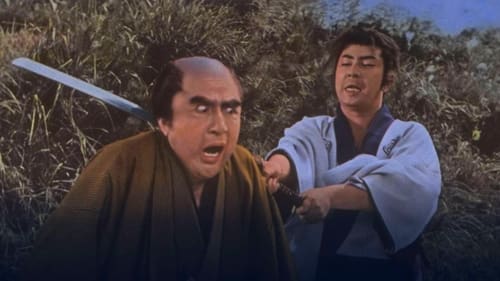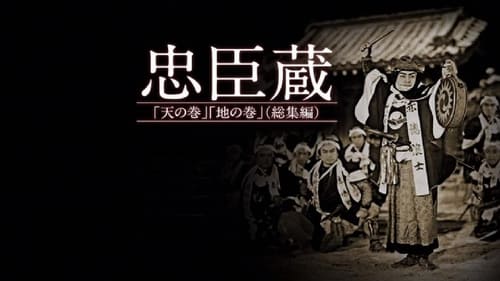Tomiyasu Ikeda
Birth : 1892-05-14, Hyōgo Prefecture, Japan
Death : 1968-09-24
History
Japanese director and screenwriter. Directed nearly 90 films and wrote nearly 80 screenplays between 1924 and 1954 , he also appeared as an actor in about fifteen films between 1921 and 1960. In 1921 Ikeda was discovered by actor Matsunosuke Onoe and joined Nikkatsu Kyoto. After the Great Kanto Earthquake on September 1, 1923 (Taisho 12), the staff of the contemporary drama club moved from Nikkatsu's Tokyo Mukaishima studio, and in the process of moving from an actor to a director. In 1921 director Ikeda filmed his debut film "Watashîmori to Samurai" - first work in "Nikkatsu Kyoto's historical drama " in which an actress is appointed in place of the Onnagata.

Fujihachi
From the opening theme song to the grand finale, you know that you have found something special as this exciting movie stars the great Misora Hibari in one of her most memorable performances as she plays Shintaro and Oharu, a brother and sister, the children of a lumber dealer who had been murdered by the evil boss Kumagoro who plots to take over Shintaro's family business with the help of a corrupt deputy who has fooled the family into believing that he is on their side.


Tokugawa Ieyasu
During the Age Of Wars (Sengoku Era), Tokugawa Ieyasu and Toyotomi Hideyoshi are vying for power and each uses their secret weapons in order to try and defeat the other. Momochi Sandayu of the Iga, along with his disciple Ishikawa Goemon are ordered by Ieyasu to assassinate Hideyoshi and get the blueprints for the hidden fortress within Osaka Castle. Meanwhile the Koga group organizes to try and defend the castle for the peace of the nation. Beating off every trick from Sandayu, Torawakamaru protects the drawing, and when Ieyasu figures out a way to hold a match between Koga and Iga the two masters fight the greatest ninja battle ever held. The effects are truly spectacular in this classic ninja film from Toei.

Director
Famed swordsman Araki Mataemon must face his best friend as they are forced to take opposite sides in a vendetta caused by the murder of a family member.

Director
The vassals of the Asano clan, who surrendered the castle & became wanderers, deceive the enemy and the public, wait for an opportunity to avenge their master and his family.

Writer
Prewar jidaigeki starring Denjiro Okochi

Director
Prewar jidaigeki starring Denjiro Okochi

Writer
Jesuit priests in Japan during the 17th century are persecuted by the shogunate to for trying to spread Christianity.

Director
Jesuit priests in Japan during the 17th century are persecuted by the shogunate to for trying to spread Christianity.

Screenplay
Yaji and Kita: The Battle of Toba Fushimi is a 1928 Japanese film directed by Tomiyasu Ikeda.[1] This comedy film showcases the acting talent of Denjirō Ōkōchi and acts as a complementary film to Yaji and Kita: Yasuda's Rescue, which is part of the Yaji and Kita series. An 8-minute remnant of the film was released on DVD by Digital Meme with a benshi accompaniment by Midori Sawato. The version in the National Film Center is 23 minutes long.

Director
Yaji and Kita: The Battle of Toba Fushimi is a 1928 Japanese film directed by Tomiyasu Ikeda.[1] This comedy film showcases the acting talent of Denjirō Ōkōchi and acts as a complementary film to Yaji and Kita: Yasuda's Rescue, which is part of the Yaji and Kita series. An 8-minute remnant of the film was released on DVD by Digital Meme with a benshi accompaniment by Midori Sawato. The version in the National Film Center is 23 minutes long.

Screenplay
The earliest existing version (incomplete) of Mito Komon history. It was one of the most famous (and most filmed) Jidaigeki stories. Lord Mito is the sage who wanders the countryside rectifying government corruption along with his faithful attendants Suke-san and Kaku-san.

Director
The earliest existing version (incomplete) of Mito Komon history. It was one of the most famous (and most filmed) Jidaigeki stories. Lord Mito is the sage who wanders the countryside rectifying government corruption along with his faithful attendants Suke-san and Kaku-san.

Screenplay
Yaji and Kita: Yasuda's Rescue is a 1927 black and white Japanese silent film directed by Tomiyasu Ikeda.[1] This comedy film showcases the comic talent of Denjiro Okochi, which contrasts markedly with his heroic performance in Oatsurae Jirokichi Koshi. The humorous exchanges with Goro Kawabe, his senior at Nikkatsu, can be priceless, with the expressions and movements of the two goofy characters making for pure, hilarious slapstick comedy. A 15-minute remnant of the film was released on DVD by Digital Meme with benshi accompaniment by Midori Sawato and Ryubi Kato.

Director
Yaji and Kita: Yasuda's Rescue is a 1927 black and white Japanese silent film directed by Tomiyasu Ikeda.[1] This comedy film showcases the comic talent of Denjiro Okochi, which contrasts markedly with his heroic performance in Oatsurae Jirokichi Koshi. The humorous exchanges with Goro Kawabe, his senior at Nikkatsu, can be priceless, with the expressions and movements of the two goofy characters making for pure, hilarious slapstick comedy. A 15-minute remnant of the film was released on DVD by Digital Meme with benshi accompaniment by Midori Sawato and Ryubi Kato.

Screenplay
For nearly 300 years, Japan had been hermetically sealed to the outside world. When, in that pivotal year of 1854, the American Admiral Perry took the direct approach that the Dutch had been unwilling to take, the ruling Shogun knew that the dynasty was over. As the shogun began to open up to the outside world, the Sonno Joi movement called for this to be reversed...

Director
For nearly 300 years, Japan had been hermetically sealed to the outside world. When, in that pivotal year of 1854, the American Admiral Perry took the direct approach that the Dutch had been unwilling to take, the ruling Shogun knew that the dynasty was over. As the shogun began to open up to the outside world, the Sonno Joi movement called for this to be reversed...

Writer
The legendary tale of the forty-seven samurai and their mission to avenge the death of their master.

Director
The legendary tale of the forty-seven samurai and their mission to avenge the death of their master.

Director
Directed by Tomiyasu Ikeda.

Director

A film on the life of Shibukawa Bangorō, the founder of the Shibukawa-ryū school of jūjutsu. To paraphrase Satō Tadao’s blurb on the back cover of the video, this is an important film for three reasons. 1. it is an almost perfectly well preserved copy of one of only a few full-length movies still available of the first superstar in Japanese cinema history, the very famous Onoe Matsunosuke. 2. it uses a method that was common in the silent era, the dyeing/tinting of film to mark given moments of day (for ex., blue for night-time) or given situations (for ex., red for fire) – and even though most films that used this technique have been redeveloped in straight b&w, this one is available in its original form. 3. it is an early SFX (special effects) movie that uses the basic tools of the trade - a great action movie full of swordsmanship and monsters (bakemono).



